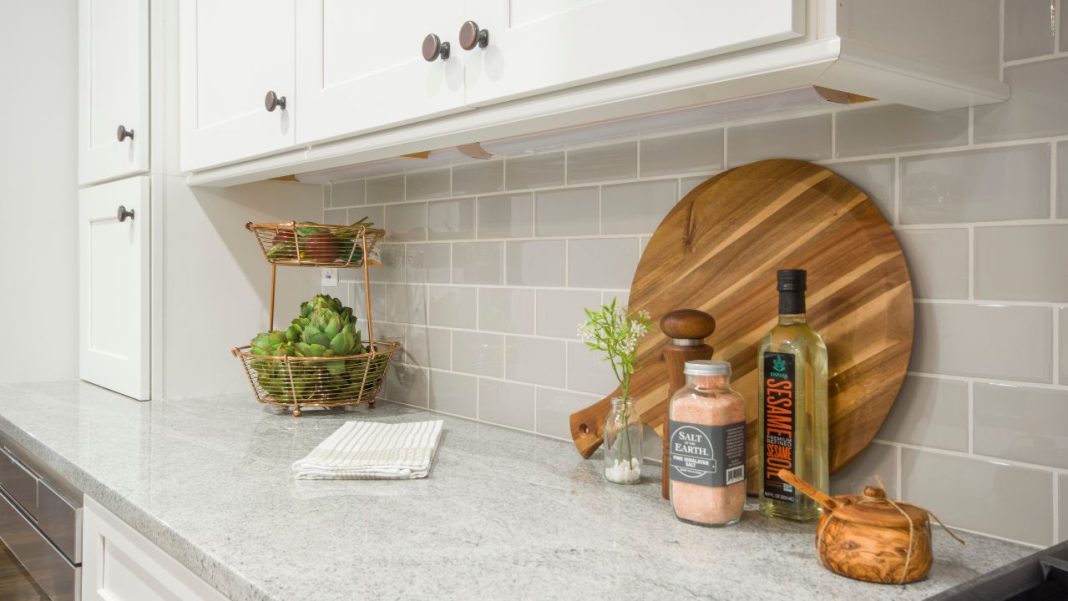It’s often challenging to find sufficient time for family or personal leisure amidst our busy work lives. Especially, cooking and preparing meals can take up a significant part of our day since we need to eat multiple times. Therefore, effective kitchen organisation is crucial for efficient time management and more free time.
In our latest blog post, we’ll show you how, with a few simple steps, you can achieve an organised kitchen. This not only creates order but also simplifies the cooking process. A well-thought-out organisational system helps you save time moving around in the kitchen and quickly find the tools you need. Whether your kitchen is large or small, proper organisation will save space and plenty of time.
On this page:
- Creating categories
- The ideal organisation system
- The ‘junk’ drawer
- Country-style kitchen decor
- The best lighting for your kitchen
- Creating Purposeful Categories
The key to a well-organised kitchen is ensuring everything has a designated place. It’s helpful to group your supplies and kitchen tools, storing them in the kitchen, dining room, or pantry.
Especially in a small kitchen with a separate dining room, it’s worthwhile to free up space in cabinets or drawers and move some categories, like cutlery, plates, cups, and glasses, to the dining room. This provides additional storage in the kitchen and means all needed tools are within easy reach when setting the table.
Kitchen:
- Kitchen tools, such as spatulas, whisks, and wooden spoons
- Knives
- Measuring cups, mixing bowls, colanders, and kitchen scales
- Kitchen gadgets, like blenders or mixers sink tidy
- Frequently used pots and pans
- Commonly used food items (pasta, rice, onions)
- Sauces and spices
- Bin bags, cling film
- Cleaning products, sponges, tea towels
Dining Room:
- Plates, cups, cereal bowls
- Drinking glasses
- Wine and champagne glasses
- Cutlery
- Tablecloths, placemats
Pantry and Cellar:
- Infrequently used food items
- Rarely used kitchen appliances
- Seldom used roasting pans, pots, or specialised pans
If you have additional storage areas besides your kitchen, these can also be used. Large pots or specialised pans that are rarely used can be stored outside the kitchen. Kitchen gadgets can be stored in the pantry or cellar.
For foods with a long shelf life, which are seldom used, consider freeing up a shelf in the pantry. Flour, lentils, or glass noodles can be stored in airtight containers and remain aromatic even after a long time.
Our tip: Keep a few pieces of cutlery in a small kitchen drawer. It’ll be at hand when you’re cooking, saving a trip to the dining room.
- The Ideal Organisation System
The foundation of a perfect organisation system is arranging the kitchen to save as many steps as possible. Depending on your cooking preferences, frequently used spices, food, and utensils should always be within reach.
From the cooking area to the countertop to the sink, we’ll show you how to enhance your kitchen’s organisation with just a few tweaks.
Organised During Busy Cooking Sessions:
For swift tool changes during intense cooking sessions, keep utensils in a container next to the stove or hang them on a wall mount. It’s also handy to have a towel holder nearby.
If you need a splash of red wine in your sauce or a bit more oil in the pan, keep essential bottles near the stove. The same goes for spices. Your top three spices, perhaps salt, pepper, and chilli, can be stored in attractive containers on the countertop.
Ensure pots and pans are arranged for easy access. Similarly, bowls, measuring cups, or colanders should be stored so that all tools are visible at a glance. This not only saves time but also reduces stress.
Remember: Ensure you have a free plug socket for your kitchen appliances with enough space to place a large mixing bowl!
Organise the Work Surface with Spice Jars:
Knives, an essential kitchen tool, should be kept within reach of the work surface. Sharp knives should be stored in a knife block or hung on a magnetic strip on the wall. This not only prevents injuries but also keeps the blades from becoming dull.
If you have ample counter space and don’t want to always bring out wooden chopping boards, you can purchase or build a fixed wooden work surface.
Keep your favourite spices, sauces, and mortar near the wooden work surface. Storing them in small spice jars with wooden lids can be both decorative and functional.
Tips for Plastic-Free Storage:
Dry foods frequently used in cooking, such as pasta, rice, or sugar, can be stored directly in the kitchen. To prevent spills and protect foods from moisture, it’s best to store them in airtight glass containers.
Stackable storage containers are space-saving and perfect for smaller kitchens.
Cleaning and Hygiene Area:
A tidy kitchen and cleanliness go hand in hand. Ensure there’s ample space for cleaning products, dishwasher tablets, sponges, and brushes, typically under the sink. Place dish soap, kitchen soap, and cleaning cloths near the sink.
Bin bags, cling film, and baking paper can be stored near the bins. Store them in a way that lets you quickly identify their size.

